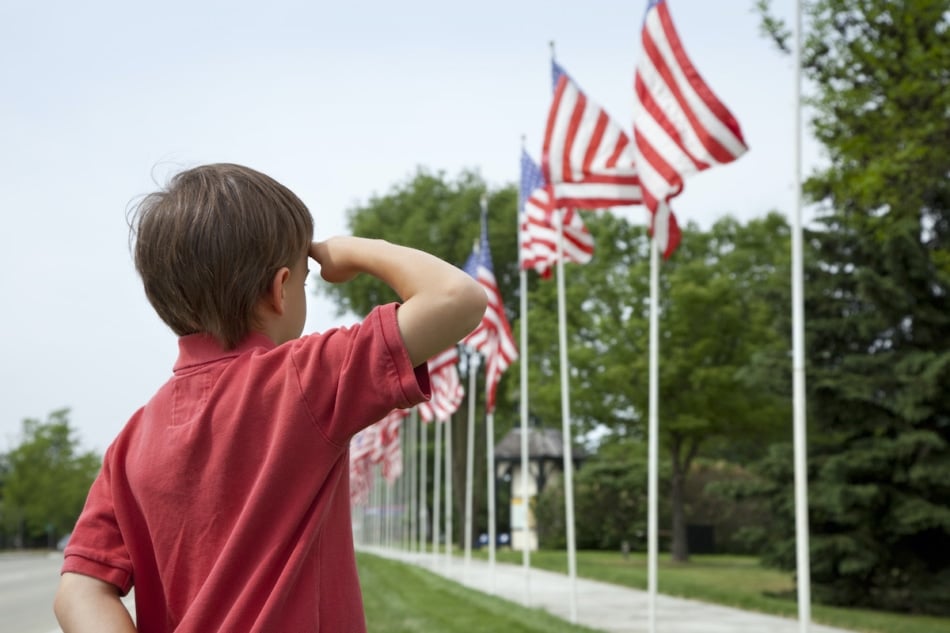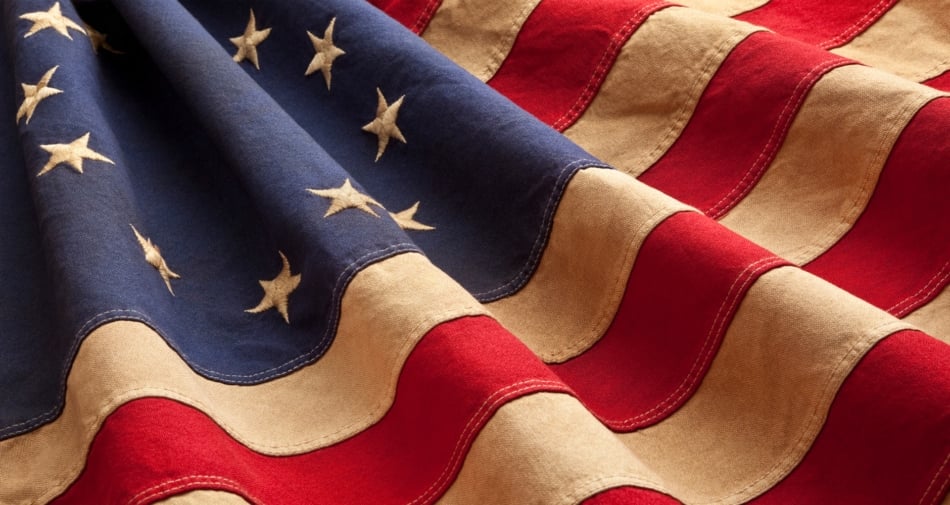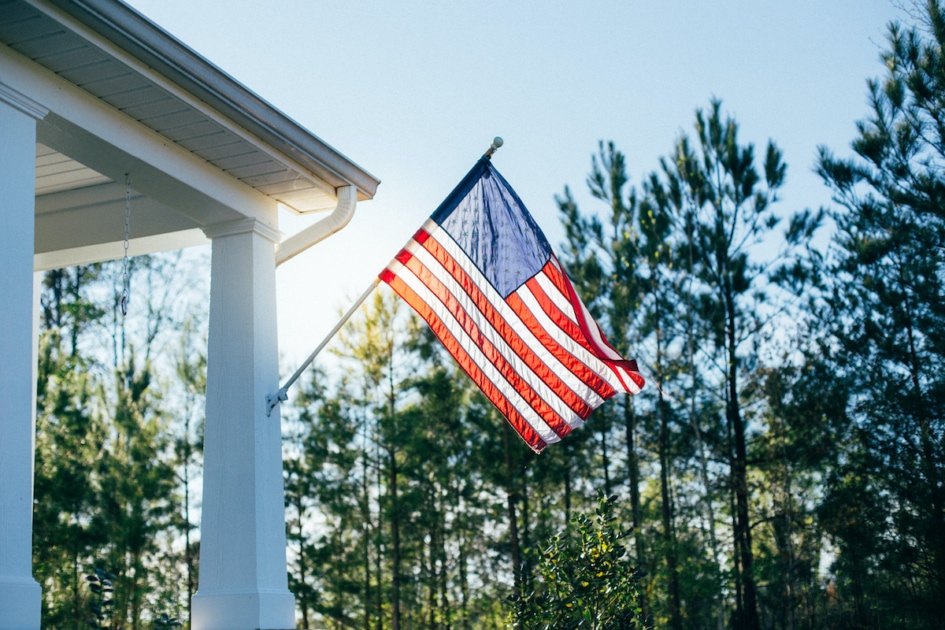When Is Flag Day?
Flag Day is Friday, June 14, 2024. National Flag Day is an annual observance for all Americans, but it is not a federal holiday. Each year the sitting president encourages all Americans to display the US flag outside their homes and businesses. In observance of Flag Day, the flag is flown from all public buildings, speeches are made in public places, and ceremonies take place in towns or cities.
What Is Flag Day?

There were few public ceremonies that honored the flag until June 14, 1877, when it was flown from every government building for the centennial of the flag’s adoption. After that, many citizens and organizations advocated the adoption of a national day of commemoration for the flag. In 1916, President Woodrow Wilson unofficially declared June 14 as Flag Day.
Coincidentally, Wilson also proclaimed “The Star-Spangled Banner” the U.S. national anthem that same year. Nonetheless, Congress did not designate the song as the national anthem until 1931, and only in 1949 did President Harry Truman sign the legislation that made June 14 of each year Flag Day.
Who Made the United States Flag?

While many of us learned that Betsy Ross, a seamstress from Philadelphia, was the designer of the flag, this legend has been discredited. According to many sources, President George Washington did visit Betsy in Philadelphia but had brought a flag design with him that contained 13 red and white stripes and 13 six-pointed stars set in a circle.
Accordingly, the only thing Ms. Ross suggested about the flag was to use five-pointed stars (mullets) rather than six-pointed ones (estoiles). Many credit Betsy Ross for sewing one of the first US flags made out of wool bunting, but historians cannot confirm if she actually made the first flag ever.
Some credit Francis Hopkinson, a signer of the Declaration of Independence, with the design of the original flag. Hopkinson himself felt that he was the designer and should be compensated for it by Congress, but Congress argued that many were responsible for the design so he was never paid.
Whomever really designed the flag, it is known that on June 14, 1777, the design with the stars and stripes became America’s official flag with this declaration by Congress: “The flag of the United States will be thirteen stripes, alternate red and white [and]…the union [canton] be thirteen stars, white in a blue field, representing a new constellation.”
Adding Stars To The Flag
As more states entered the Union more stars were added to the flag. In 1818, Continental Congress passed the Flag Act, stipulating that the flag will always have 13 stripes (one for each of the original colonies) and that a star will be added for each new state on July 4 only. As you can surmise, the flag changed frequently in the beginning, but hasn’t since the 49th and 50th stars for Alaska and Hawaii were added in 1959.
Flag Day Trivia
In honor of Flag Day, here are a few interesting pieces of trivia about our great Red, White, and Blue:
- Did you know that Francis Scott Key wrote the words to “The Star-Spangled Banner” on the back of an envelope?
- A vexillologist is an expert in the history of flags.
- When is it appropriate to fly the flag upside down? The flag should never be displayed with the union down, except as a signal of dire distress in instances of extreme danger to life or property. (See more flag etiquette below.)
US Flag Code & Etiquette
Read about American flag etiquette here.
Display the flag on all days, especially on these days:
- New Year’s Day, January 1
- Inauguration Day, January 20
- Martin Luther King Jr.’s birthday, third Monday in January
- Lincoln’s Birthday, February 12
- Washington’s Birthday, third Monday in February
- Easter Sunday (variable)
- Mother’s Day, second Sunday in May
- Armed Forces Day, third Saturday in May
- Memorial Day (half-staff from sunrise until noon only, then raised briskly to the top of the staff until sunset), the last Monday in May
- Flag Day, June 14
- Father’s Day, third Sunday in June
- Independence Day, July 4
- Labor Day, first Monday in September
- Constitution Day, September 17
- Columbus Day, second Monday in October
- Navy Day, October 27
- Veterans Day, November 11
- Thanksgiving Day, fourth Thursday in November
- Christmas Day, December 25 and such other days as may be proclaimed by the President of the United States
- The birthdays of States (date of admission)
- State holidays.


The star for Hawaii was not added until 1960 as it entered the union after July4th 1959.
I wish you acknowledged how flags/flag design are not to be used such as clothing, auto decals, anything that is not an actual flag flying on a flagpole.
I completely agree with you! 🙂
Hi Nargii and Christopher, Thanks for your comments! You can read more about Flag Rules & Etiquette in our article here – https://www.farmersalmanac.com/us-flag-etiquette-rules-guidelines
The consensus among flag historians is that Francis Hopkinson designed the American flag. (See: Leepson, Marc. “Flag: An American Biography. St. Martin’s Griffin. 2005. p. 33.) According to the Wikipedia article on Francis Hopkinson, he designed two Stars and Stripes flags: (1) one for the United States and (2) one for the U.S. Navy, which later became the favored National flag. The Wikipedia article also indicates that, in all likelihood, Congress rejected Hopkinson’s claim for payment not because of his flag designs, but because he was not the only consultant who co-designed the Great Seal of the United States. Congress created three Great Seal committees but never created a U.S. flag committee. Instead, the Continental Marine (maritime) Committee sponsored the U.S. Flag Resolution of June 14, 1777. This committee had no U.S. flag or Navy flag consultants. Hopkinson was a member of the Marine Committee in 1776. He later ran the Continental Navy — which was under the Marine Committee — from the fall of 1776 throughout 1777.
The Wikipedia article on Betsy Ross indicates that she made “ship’s colours” (naval flags) for the Pennsylvania navy during the Revolutionary War. These flags looked nothing like the U.S. flag. After the Revolution, Mrs. Ross made U.S. flags for 50 years. She contributed the five-pointed star to the U.S. flag, which superseded the Flag’s six- and eight-pointed stars previously in use. (See also the Wikipedia article on the Betsy Ross Flag.) Earl P. Williams, Jr., U.S. flag historian/ paleovexillologist